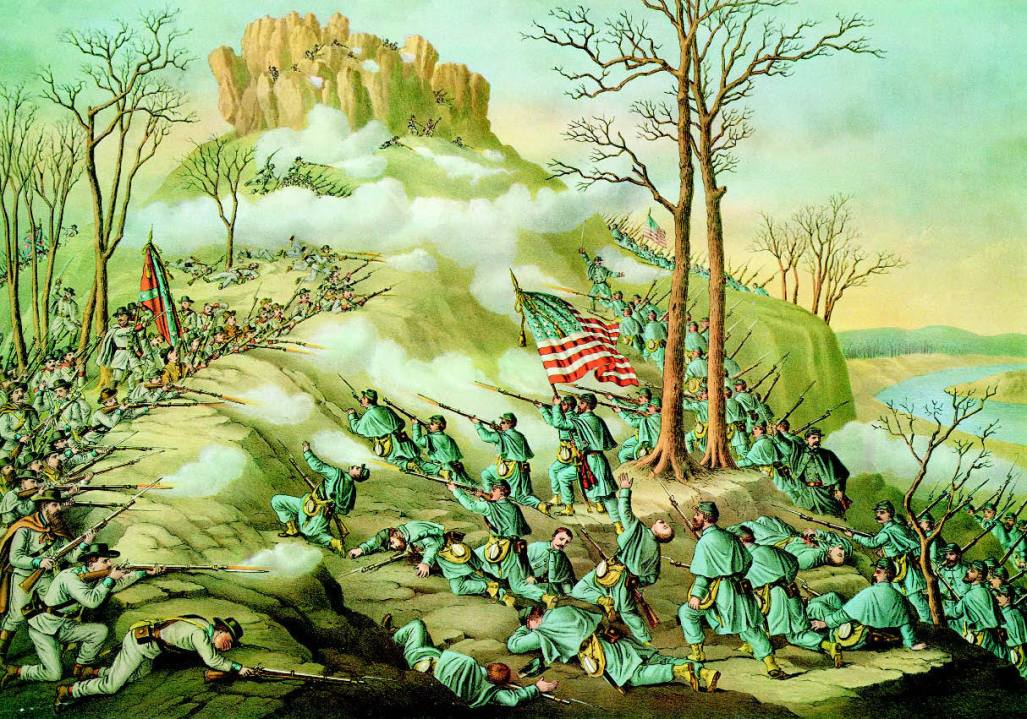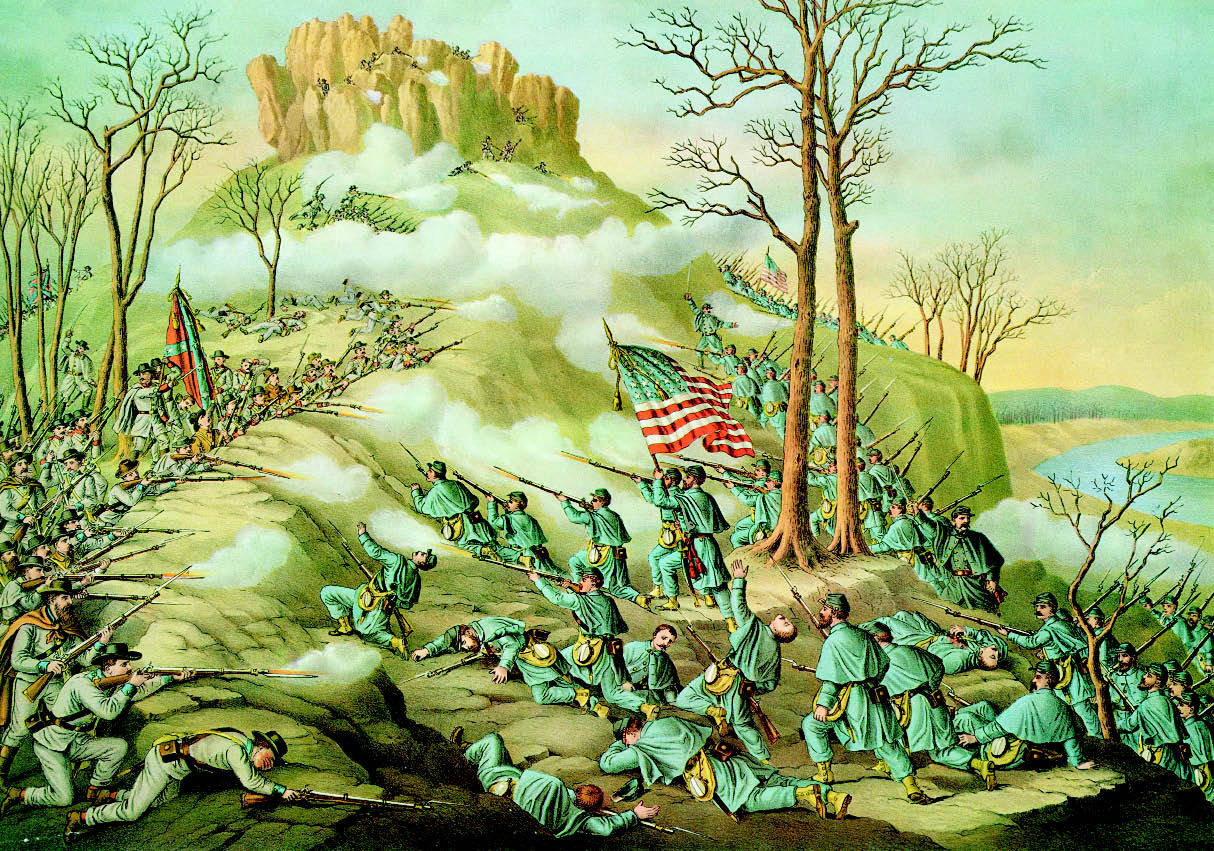If you think the Special Relationship has been looking strained in recent years, consider its condition during the American Civil War(1861-65). In 1863, an anonymous letter was delivered to Charles Francis Adams at the US legation in London:
Dam the Federals. Dam the Confederates.Dam you both. Kill you damned selves for the next 10 years if you like; so much the better for the world and for England. Thus thinks every Englishman with any brains. NB PS We’ll cut your throats fast enough afterwards for you if you ain’t tired of blood, you devils.
Brevity, they say, is the first grace of style. The feeling that letter encapsulates ran pretty high in England. For us, the Civil War was — as Amanda Foreman’s new book shows — a colossal economic, political and diplomatic pain in the backside. But it was a pain that — strive as we might — couldn’t very well be avoided.
British and Irish volunteers joined up, or were impressed, on both sides of the conflict — and for more than the odd one it was a coin-toss as to which army they joined. Henry Morton Stanley, later to find fame for tracking down Dr Livingstone, at one point blithely swapped sides: ‘He had never cared about politics anyway; “there were no blackies in Wales”.’ Our pipes ran on American baccy and our mills on American cotton.
Diplomatic pressure was intense from both sides: the Confederacy yearned for great power recognition; the North wanted British noses (and British blockade- runners) out of it. In defiance of the conditions of British neutrality both sides were quietly recruiting— and ingenious Confederate agents were having warships knocked up on the quiet in British shipyards.
One of the problems for both the Union and Confederate causes, in terms of how the British intervened or refused to, was the shadowboxing over slavery. Lincoln’s abolitionist sympathies came well behind his prime cause, which was the preservation of the Union. As he put it in a letter to the New York Tribune: ‘If I could save the Union without freeing any slave I would do it, and if I could save it by freeing all the slaves I would do it.’ He simply couldn’t make emancipation a stated casus belli, however well it would have played overseas.
Likewise, the Confederates’ agents and propagandists — given the settled hostility to ‘the peculiar institution’ among ordinary British people — struggled to downplay the South’s reliance on slave labour, hinting quite untruthfully that the best hope for abolition was a free South. The substantial gains they made in public opinion — by sentimental references to their liberation struggle, and through the hardship the North’s trade tariffs and blockade of cotton caused English mill-workers — were fatally undermined by ‘the stain of slavery’.
So while the local action on the battlefield was hot, the transatlantic action was more often lukewarm: diplomatic wrangling, arguments over whether the North’s blockade of the Southern ports was effective enough to be recognised in international law; and occasional flashpoints — such as when early in the war a Union captain illegally boarded a British mail packet off Cuba to seize two Southern diplomats, and later, when Britain impounded nearly-built Confederate ships in a Liverpool dockyard. This is the story of how Britain didn’t get involved in the American Civil War — and how not getting involved was no simple matter.
Foreman adds colour to a labyrinthine tale of dithering and evasion with apt and sometimes piercing details. On the battlefield at Shiloh, for instance, Stanley met a boy who picked up a posy of violets to wear for luck:
A short while later, whether it was five minutes or five hours Stanley did not know, he heard a piteous cry behind him. ‘Oh stop, please stop a bit.’ He glanced back. It was the boy with the violets. He was standing awkwardly on one leg, staring at the remains of his foot.
The corpses and severed limbs pile high — troops in the rain-soaked south having to share the high ground with the dead; in the north, clambering over bodies to advance. Virginia, in sultry weather, had ‘a pervasive smell of rotting horses’. Amazing that the first encounters of the war drew spectators; on high ground overlooking Manassas, Washington toffs gathered to survey the smoky battlefield, one woman reportedly greeting each explosion with: ‘That is splendid. Oh my! Is not that first-rate?’
As well as its horror — vide General Lee’s remark at Fredericksburg: ‘It is well that war is so terrible; we should grow too fond of it’ — the sheer muddle of war is well captured. Hesitant and intelligence-starved, both Union and Confederate generals muffed golden opportunities for decisive victories. And the Battle of Gettysburg began by accident, when four brigades of Confederate Infantry, in search of a warehouse reputed to be full of shoes, bumped into the 1st Cavalry Division of the Union Army. Oops!
As Foreman explains in her introduction, inspired by a production of Nicholas Nickleby she once saw, she has set out to produce a ‘history-in-the-round’ — treating her cast of characters with a biographer’s close-up attention, while fitting them into the broad sweep of narrative history. This is not quite as revolutionary an aspiration as she seems to think (surely that’s what most popular histories now seek to do?) but her touch as a practitioner is spot-on.
Cutely, given the Nicholas Nickleby thing, she even dresses it up a bit like a Victorian novel. Chapters are given running sub-heads in italics (‘McLellan takes charge — Prince Napoleon at the White House —Samford’s spies — Desperate for arms — The British join up’) and thanks to the presence on all the battlefields worth attending of the accomplished reporter-draughtsman Frank Vizetelly, it’s stuffed with glorious line- drawings as well as the inevitable cartoons from Punch.
The characters Foreman picks out range from diplomats and journalists — such as the luckless William Howard Russell, never forgiven for truthfully reporting the Union’s rout at Bull Run — to volunteer recruits in both armies.
And there are the more rackety as well, such as Alfred Rubery, twenty-something heir to a Brummie umbrella-manufacturing fortune and ‘one of life’s nincompoops’, who falls in with a roguish Confederate partisan and an eight-fingered ex-slave-captain in a botched privateering adventure.
Abraham Lincoln remains somewhat offstage most of the time; but his scheming and blustering Secretary of State, William Seward, is compellingly rendered. His stamping-butterfly threats become a sort of running joke — ‘Seward sent one of his wrap-the-world-in-flames dispatches’, Foreman writes at one point with splendid offhandedness.
This is a very long book, and I don’t think it an insult to Amanda Foreman to say that you’d have to be pretty interested in the American Civil War to pick through its detail-crowded pages. And you’ll need to pay attention.
But this great bulk of material is formidably marshalled, and it is to the author’s credit that, if it can’t exactly be said to zip by, it does roll along with the ragged grandeur of one of Ulysses S. Grant’s infantry battalions. Those who come to it hoping for the sequel to that chick-flick with Keira Knightley will be flummoxed — but if you’ve an appetite for serious history in widescreen you’ll be in hog-heaven.








Comments